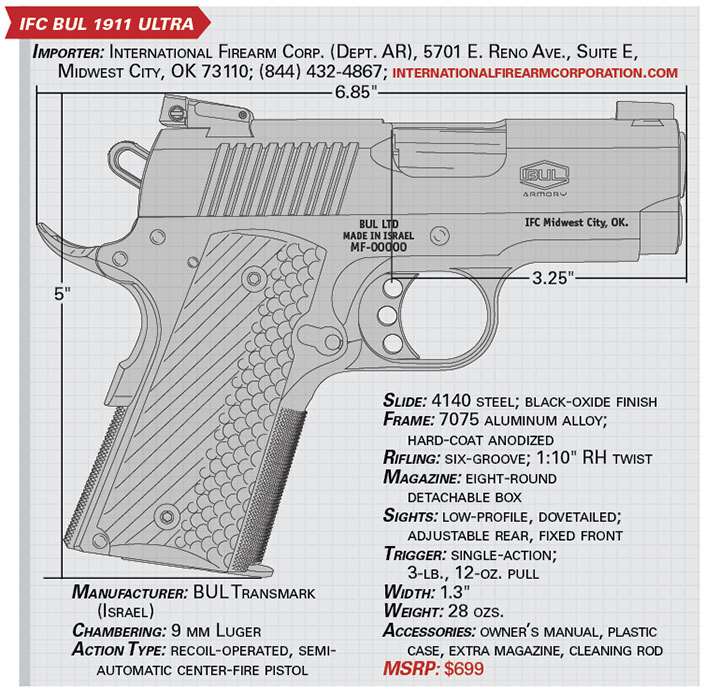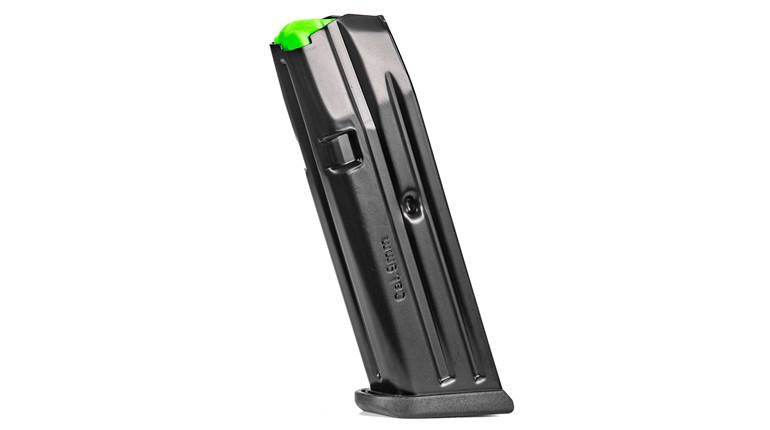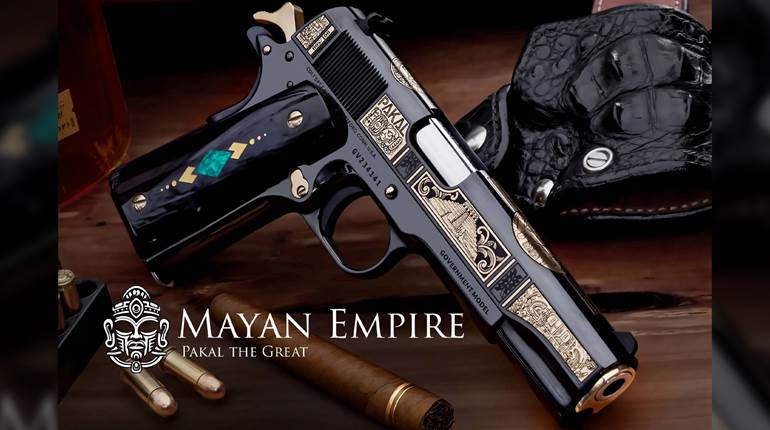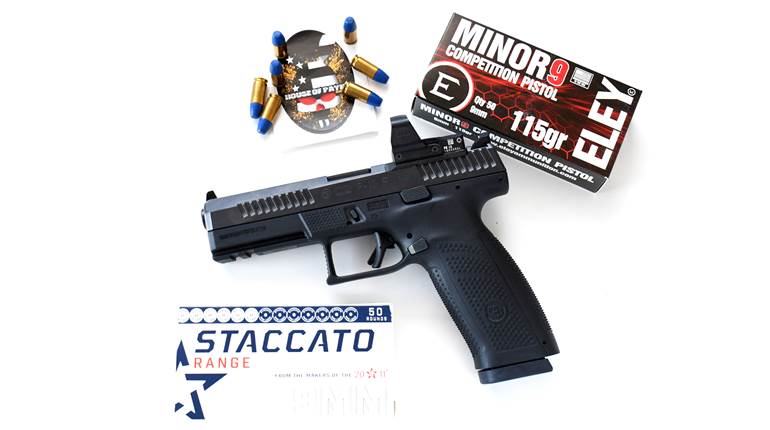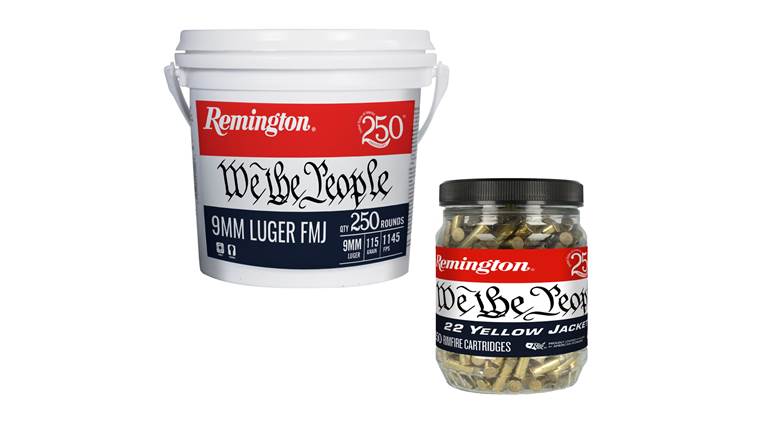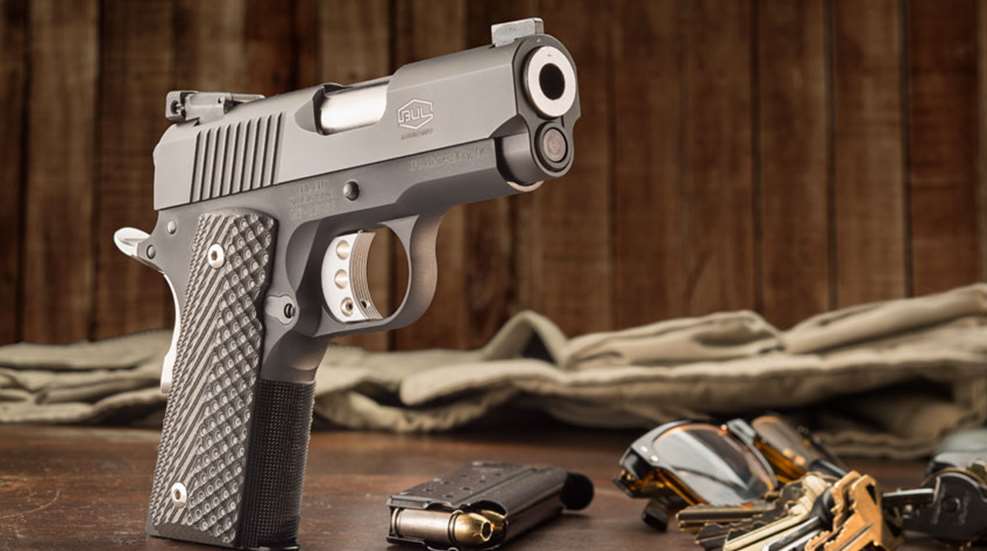
There’s been a trend of late among M1911 manufacturers to build 9 mm Luger-chambered guns on alloy frames. Sport shooters have discovered the lightweight guns to be accurate and fast to shoot with minimal recoil, while the familiarity of the M1911’s operating system and manual of arms has made the alloy-framed 9 mm a popular option for concealed carry use as well.
Israel’s BUL Transmark is among the latest to throw its hat into the ring with the Ultra pistol. Built on an alloy frame and with a 3.25" barrel, the Officer’s-size gun has a capacity of eight 9 mm rounds and comes with two magazines. Imported by International Firearm Corp., the BUL Ultra possesses many of the features savvy shooters ask for at a surprisingly affordable price.
BUL machines the Ultra’s frame from 7075 aluminum alloy. It features machine checkering on the frontstrap at 30 lines per inch and a black anodized finish. In an effort to let the shooter get as high a grip as possible, the frame is undercut at the juncture of the frontstrap and trigger guard. Combined with a sweeping stainless-steel beavertail, shooters can achieve a high grip, which helps in controlling muzzle flip. The frame is fitted with an extended ejector to ensure empty cases are forcefully ejected. BUL outfits the Ultra with a single, strong-side-only thumb safety that engages and disengages crisply. A checkered aluminum mainspring housing is used on the pistol, and G10 stocks are affixed to the frame with hex-head screws.
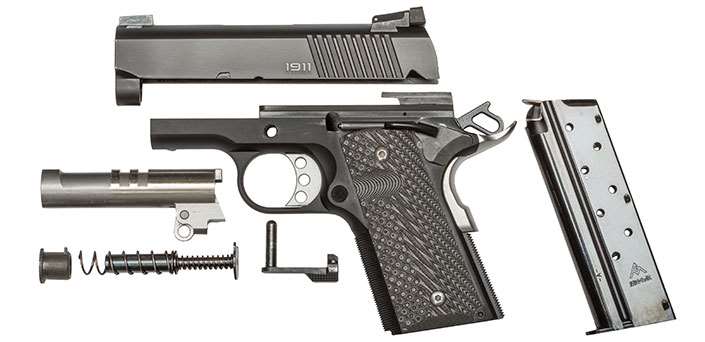
Like many manufacturers, BUL uses metal injection molding (MIM) parts for its lockwork and other small parts to save the cost of machining them. The elongated, Commander-style hammer, sear, disconnector, slide stop and magazine release are all made using the MIM process. Though purists might demand machined parts, these MIM components allow BUL to sell the Ultra at an economical price. Of course, any of the factory MIM parts can be replaced with aftermarket machined components, if desired.
The Ultra’s frame and slide are of Series 70 design, with no trigger-actuated firing pin safety. Along with the lightweight aluminum trigger used on the pistol, that allowed BUL technicians to tune the trigger pull to a crisp 3 lbs., 12 ozs., which is very sensible for a defensive gun. The trigger breaks cleanly with nearly no overtravel.
BUL machines the Ultra’s short slide from 4140 carbon steel. It features wide rear cocking serrations and a lowered and flared ejection port. The slide uses a traditional-style internal extractor, and the front sight is dovetailed in place. The low-profile rear sight is also dovetailed into the slide and is adjustable for windage and elevation. The slide is finished in a nonreflective black oxide coating.

The Ultra’s bushingless design uses a 416 stainless-steel bull barrel with an integral feed ramp. The supported barrel measures 3.25" from the end of its hood to the flat-faced muzzle. Because of the short barrel there is very little room for a recoil spring, and it is doubtful that a single spring would allow the gun to operate properly, so the BUL Ultra uses a common dual-spring setup.
There is a tightly wound, small-diameter recoil spring wrapped around the recoil spring guide. A steel cap with a flange slides over the recoil spring guide, and a larger-diameter spring is wound around the cap so there is no spring-to-spring contact. Together they provide the needed action for proper functioning, yet the slide can easily be hand-cycled to chamber a round.
Because of the gun’s abbreviated barrel length and short sight radius, we shot our accuracy groups at 15 yds., per our testing protocol. We fired all groups from a seated rest using a DOA Tactical shooting bench and a Millett BenchMaster for support. We fired five consecutive, five-shot groups for each ammunition type tested, with the results shown in the accompanying table.
Our first group printed about 3" left of our aiming point, and we quickly dialed-in the sights until the point of aim and point of impact coincided. Our test gun’s crisp trigger and excellent sights aided us in firing some very respectable groups. Hornady’s 115-gr. FTX Critical Duty rounds produced the best five-shot group, measuring just under 1.25", and the groups from Federal’s 150-gr. Syntech rounds were just slightly larger. The average group size for all three loads tried was just 1.51". Recoil of the Ultra is minimal, and even hotter defensive loads were very manageable. The firm reset of the trigger made quick follow-up shots easy.
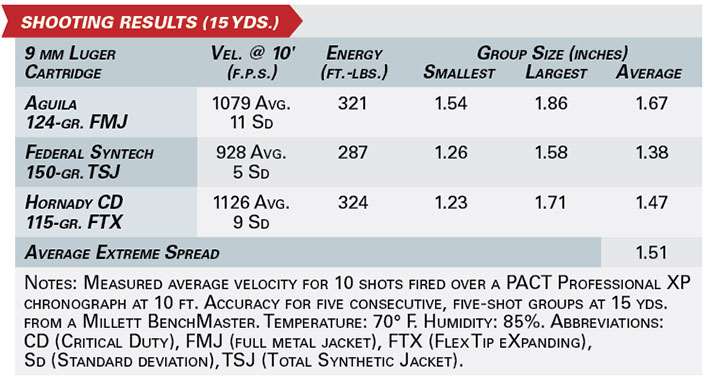
We were impressed with the IFC BUL Ultra. It proved to be 100 percent reliable during our testing and displayed all of the accuracy needed for use as a concealed carry handgun. The pistol possesses exemplary fit and finish for a gun in this price range, and offers shooters an economical, compact solution with many custom features.
